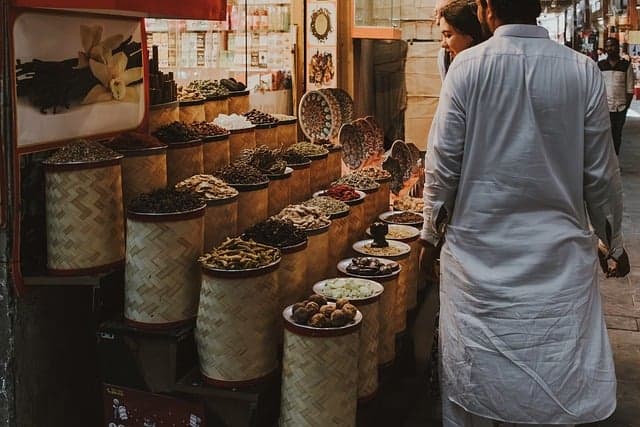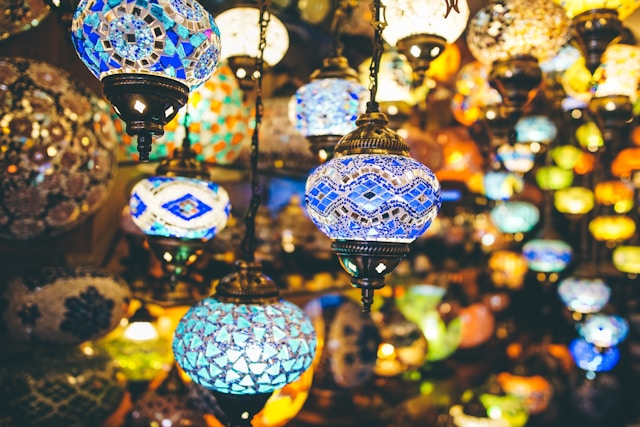Art-Dubai was first held in 2006. It was invented by London dealer and gallerist John Martin and Dubai businessman Benedict Floyd for Western dealers and gallerists who, on the wave of unprecedented economic growth, turned to the East in search of new clients. The crisis has somewhat cooled the fervor with which the local rich rushed to invest in modern and not only art, but by no means extinguished it completely. In January in Abu Dhabi announced the opening dates for the Louvre and Guggenheim on Saadiyat (2015 and 2017 respectively) – they have several times rescheduled, and from different sides expressed doubts that the grandiose (for example, the area of the Guggenheim Museum – Abu Dhabi project by Frank Gehry reaches 42 thousand square meters) “cultural construction” will be completed. However, as for other smaller-scale initiatives, they all continue to develop: in Doha, two art museums are operating successfully (Mathaf, which currently hosts an exhibition of Cai Guoqiang, and MIA, which just opened the exhibition “Gifts of Sultan”), in Dubai, forming a cluster of contemporary art galleries, and in Sharjah preparing for another biennial, which will be held in March 2013 (not so long ago was announced its curator – Yuko Hasegawa, chief curator of the Tokyo Museum of Modern Art).
In recent years, Art Dubai has also become an important contemporary art center in the region. Since 2010, it has been headed by Antonia Carver, who took part in the creation of Bidoun, a magazine on Middle Eastern art published in New York, and the Art Center of the same name. Under her stewardship is a dynamic, fast-growing body that attracts museum and independent curators, collectors and dealers from all parts of the world. “The fair has its roots in the Middle East and East Asia, but it has to be a reflection of the global nature of art,” says Carver, noting that her main goal is to make the fair a meeting place for experts from East and West. And so far she is succeeding. This year Art Dubai hosted 75 galleries, with a wide variety of galleries showing art catering to different cultural, religious and political tastes.
Funding allows for a diverse, parallel, non-profit program that is now an attribute of any advanced fair. Art Week in conjunction with Art Dubai included performances, special projects, residency grants for artists and curators, a small design fair, a Sikka young art fair, and a forum on the media in art – with curator Hans-Ulrich Obrist, writer Douglas Copeland, LACMA director Michael Govan, and collector Sultan Sououd al Qassemi all participating. The fair is financially supported by Abraaj Capital, which once contributed a lot to the media frenzy surrounding the Middle East art market by purchasing a work by Mohamed Ehsai for its corporate collection in 2008. A huge canvas where the name of the painting “He is merciful” written in Arabic script in the form of green ribbons on a black background, was purchased for a record at the time 1.2 million dollars with an estimeite of 100-150 thousand.
Since 2006, the number of galleries in Dubai has grown to 40. They are concentrated in two parts of the city: in the financial center of DIFC are more representative and expensive, in the Al Quoz area, located in the middle of continuous construction, more young and dynamic. Some, like Ayyam Gallery, hold two branches at once: in the financial center the gallery shows works by Othman Moussa (oil paintings that represent an extremely restrained commentary, both conceptually and formally, on the consequences of the Arab Spring), and in the Al Quoz neighborhood, works from the private collection of gallery owners Khaled and Hisham Samawi, which turned out to contain photo documentation of bloody scenes of Ashura celebration (a day celebrated by public self-exorcism as a tradition). The gallery occupies one of the largest booths at the fair and displays a selection of works by artists from Lebanon, Syria, and other countries in the region. The owners soon plan to open branches in London and New York.
Other major players include The Third Line, Green Art Gallery and Gallery Isabelle Van Den Eynde (IVDE). All of them have been selected by the selection boards of respected Western fairs, to which they will travel in the near future. The Third Line, for example, will exhibit at Frieze in New York in May. At Art Dubai, it showed work by young artists from Iran and Iraq (all of whom live and work in the U.S.). Among them is Amir Fallah, who makes colorful, vivid collages with meaningful titles (such as First to Believe, Last to Live). Haiwa Kahraman, who received her art education in Italy, paints on wood or cotton and depicts delicate female marionette figures – suspended by strings, they perform everyday actions: ironing, folding cloth or simply looking in the mirror. Two other galleries from Dubai, working exclusively with artists from the Middle East, have been selected for the Art Statements section at Art Basel, the world’s most prestigious contemporary art fair.
Local galleries have no problem choosing works for Art Dubai – they all know well the preferences of local collectors (and they are the ones the fair is primarily designed for) and cultural specifics (exhibitors are warned in advance that they should not show works that could be misinterpreted). There are many variations on the theme of Arabic ligature, collages, glitter, works based on a reflection on the traditions of the Arab world and Muslim culture, and especially many fantasies on the theme of carpet weaving. Saudi Arabia’s only Athr Gallery in Jeddah exhibited carpets of all kinds: Ibrahim Abu Mismar “weaved” carpets of copper, Ayman Yossri Deidban folded them of colorful paper napkin wrappers, and Nasser Al Salem printed calligraphic designs on fabric. Western galleries have more freedom in this respect. Some don’t tailor their exhibitions to local visitors. Goodman Gallery in South Africa had an exhibition of William Kentridge’s work. According to the gallery owner, his works were in great demand at the last Art Dubai, and during the preview of this year’s fair members of the ruling family of Dubai (the fair itself is held under the patronage of Sheikh Mohammed Bin Rashid Al Maktoum) showed interest in some of the pieces. Although there is a rug here as well – a giant 4.5m by 4.5m mohair rug that looks like a woven collage with recognizable figures from films and Kentridge’s drawings.
Three reputable Western galleries participating in Art Dubai for the first time tried to diversify their exhibitions as much as possible. The Pace built its booth around the works of artists, each of whom would represent the city where the gallery has a branch. Given that The Pace has branches in London, New York, and Beijing, the booth featured works by Zhang Huang, Keith Tyson (winner of the British Turner Prize), and Tara Donovan. Arndt Gallery from Berlin had a similarly multicultural exposition: there was a giant five-meter-high mosaic dome by Khosrow Hasanzade of Iran, striking canvases by the young Indian artist Jitish Kallat, and works by Heinz Mack, a classic of German contemporary art and one of the founders of Zero. The most representative booth was that of Galerie Perrotin, a heavyweight of the French art market – Wim Delvoye, Bharti Kher, Farhad Moshiri, Takashi Murakami, the French duo Kolkoz: that is, unconditionally recognized commercial artists, whose works are the attribute of a model collection of contemporary art, no matter what part of the world we are talking about.
Some Western galleries, however, take a different tactic. Priska C. Juschka Fine Art from New York has only brought artists who are somehow related to the Arab world, although they are not at all basic to the gallery’s arsenal. For example, Nicky Nojomi, who moved to New York after the revolution in Iran, and Almagul Menlibayeva, who made a series of performances and photo stories in the Kazakh steppes. “Why show work that wouldn’t be likely to interest buyers?” says the gallery owner, who is coming to Art Dubai with exhibitions of artists from the Middle East or Central Asia for the third time.



